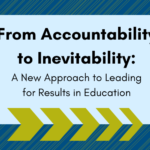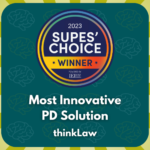by Chris Anderson
Do you like to read but don’t have enough time? Don’t worry! We’ve got your back! Introducing the new thinkLaw series: 200ish Word Book Reports. We’ll do the reading for you AND make a connection to our shared work in the critical thinking revoluation!
TED talks are exceptionally popular. The popularity of the talks is largely because the speeches are short, extremely compelling, and educational. The effectiveness of these short speeches is not random luck. They are carefully crafted and refined. In his
Request a quote for thinkLaw’s award-winning curriculum now to use our engaging and rigorous real-life legal cases to help teachers give students the essential critical thinking skills they need for success.
One main takeaway is the importance of connecting with the audience. People aren’t robots, they’re social. You can give a brilliant talk but if you haven’t connected to the audience it doesn’t matter. Audience connections are made through eye contact, sharing personal stories, laughter, and storytelling. Stories have made us who we are. Our brains are wired to be attracted to stories. Through our human history stories have shaped how our minds receive and share information.
TED talks are very effective at introducing listeners to new information. Anderson offers five steps to introducing tough, new concepts. Start where the audience is. When people have a limited time to present it makes people feel rushed to jump right into the new information.
- Start where the audience is. When people have a limited time to present it makes people feel rushed to jump right into the new information.
- Light the fire of curiosity. Make people wonder “why” and “how.”
- Bring in concepts one by one.
- Use metaphors. This allows listeners to connect the new information to something they already know.
- Use examples. Little stories will help lock the explanation in place.
A huge key to success is practice! Almost all TED talk speakers write out their entire speech and memorize it ahead of time. Those who choose to take more of a freestyle approach still usually have their entire speech unintentionally memorized through the sheer number of times they practiced. You’re going to be nervous, but you can use that fear as motivation to practice!
Bring critical thinking opportunities to your school or district through thinkLaw’s professional development and curriculum to meet the socio-emotional needs of All students. Click here to get started.
Beginning and endings are important, and you should spend time thinking specifically about these two components. Start with a dose of drama. Your first words matter if your talk was a movie or novel how would it open? Most TED speakers don’t start with a question. Most speakers begin by finding an unexpected way to frame their questions.
The Takeaway
This is an excellent book. In my fourteen years in the classroom, I don’t think I ever had a PD session about speaking to a group. I don’t even think it would have crossed my mind while I was in the classroom that public speaking would be an important skill to refine. I think that teachers don’t really consider themselves to be public speakers. Most teachers will tell you that they aren’t nervous to speak to a group of 12-year-olds like they would be speaking in front of adults but possessing a solid tool kit of public speaking strategies will absolutely make a teacher more effective in the classroom. When I read this book and think about how much of teaching is speaking to a group it makes me realize this book would be a great addition to a teacher’s summer reading list.
Teachers are pressed for time and don’t have a lot of time to practice each and every lesson they’re going to teach, but I think an easy take away would be to practice a small portion of a lesson on your way to school in the morning. Maybe take a few moments to practice the opening of a lesson or the close. The more teachers practice some key storytelling components, the better they’ll be at improvising. Just thinking about yourself as a storyteller might help to reframe your thinking about capturing and holding students’ attention. The book said, “Knowledge can’t be pushed into a brain. It has to be pulled in.” That statement is not only true for adults, but also for our students.









Leave a Reply